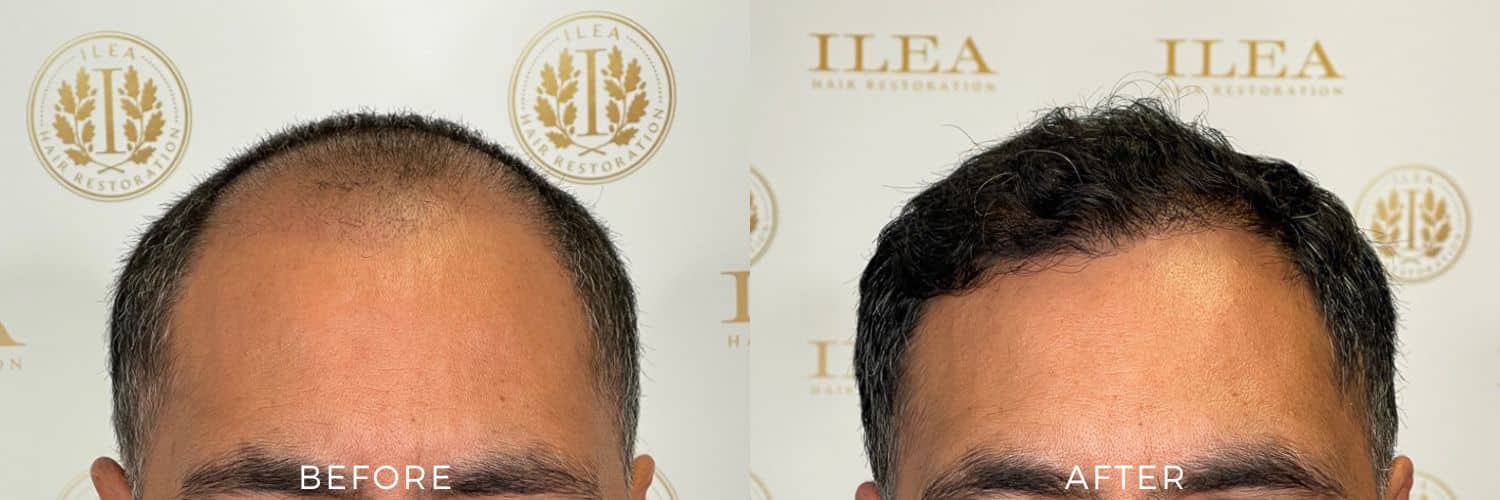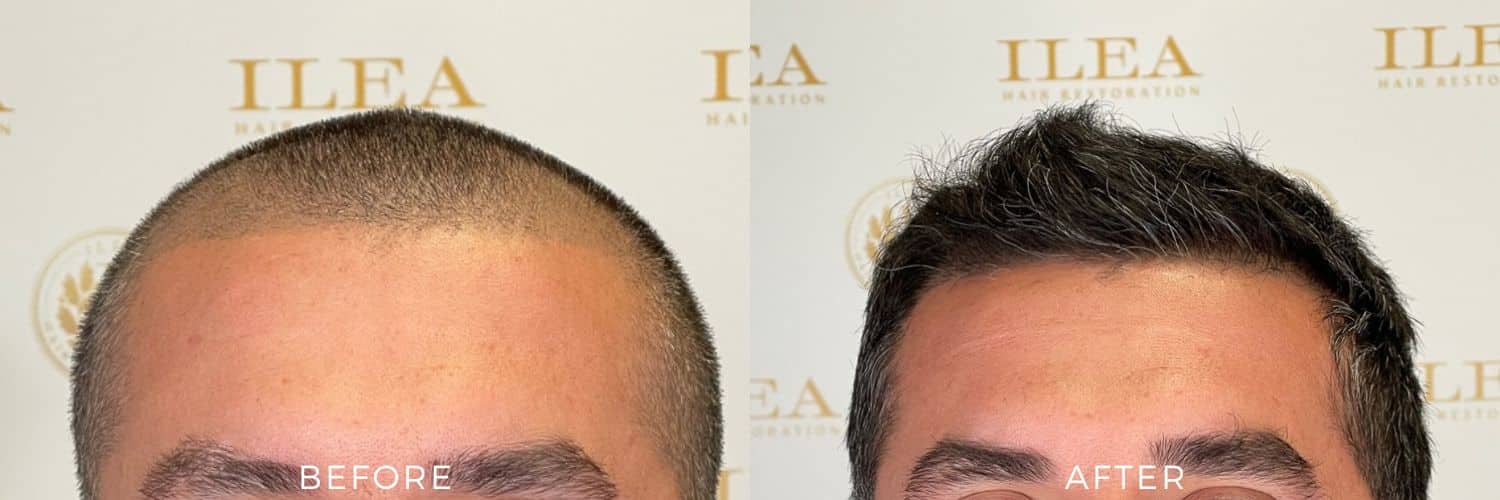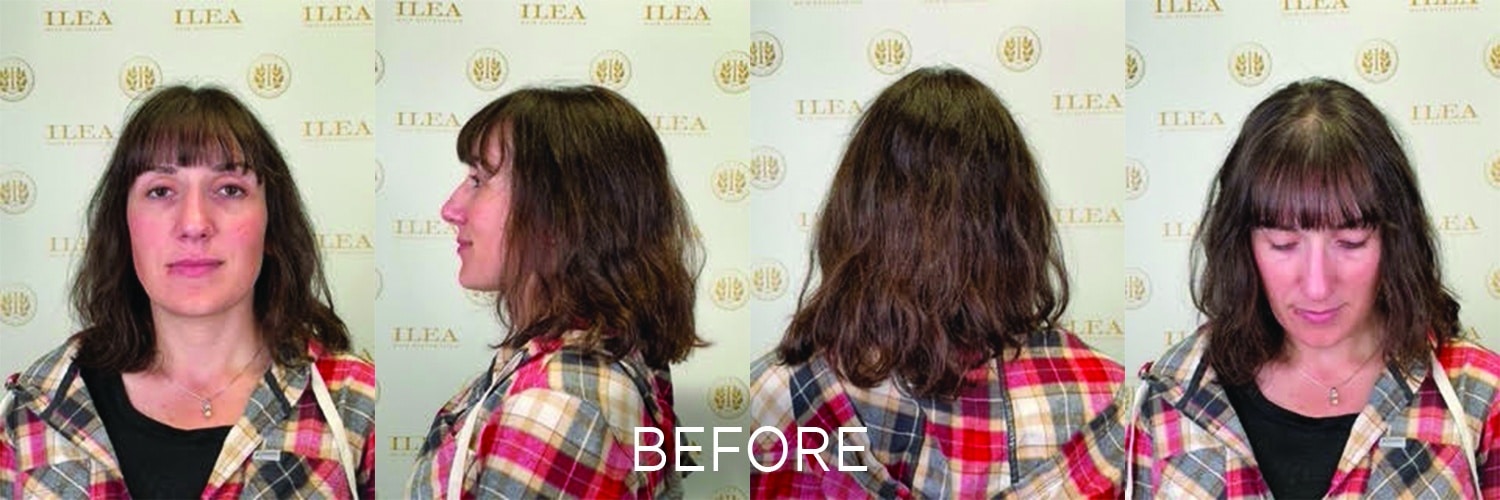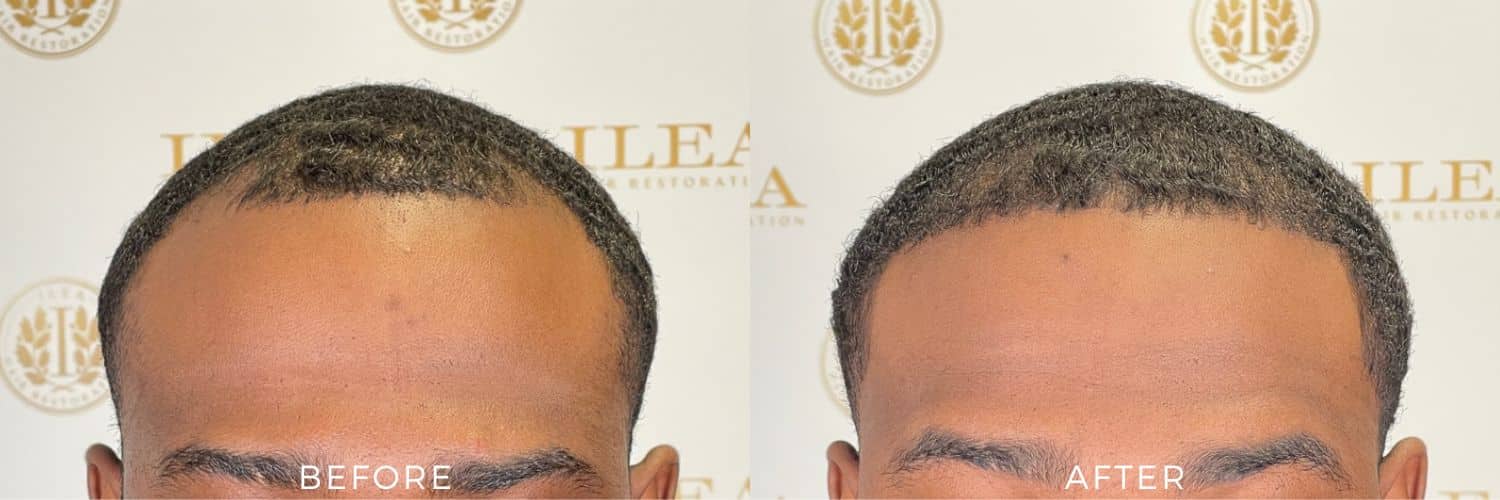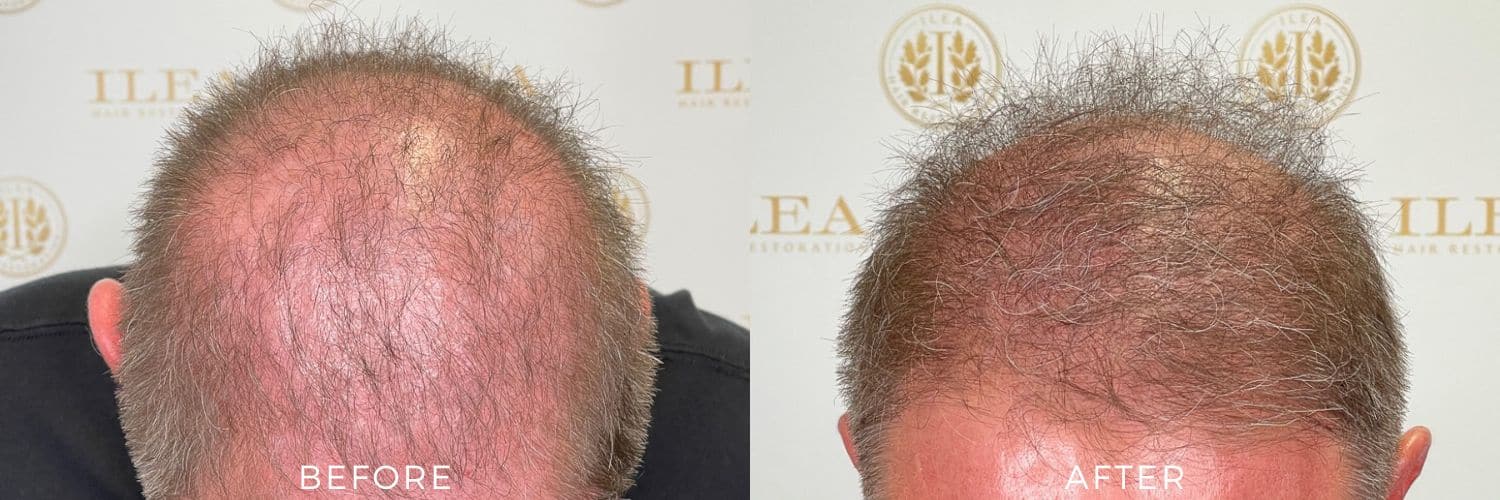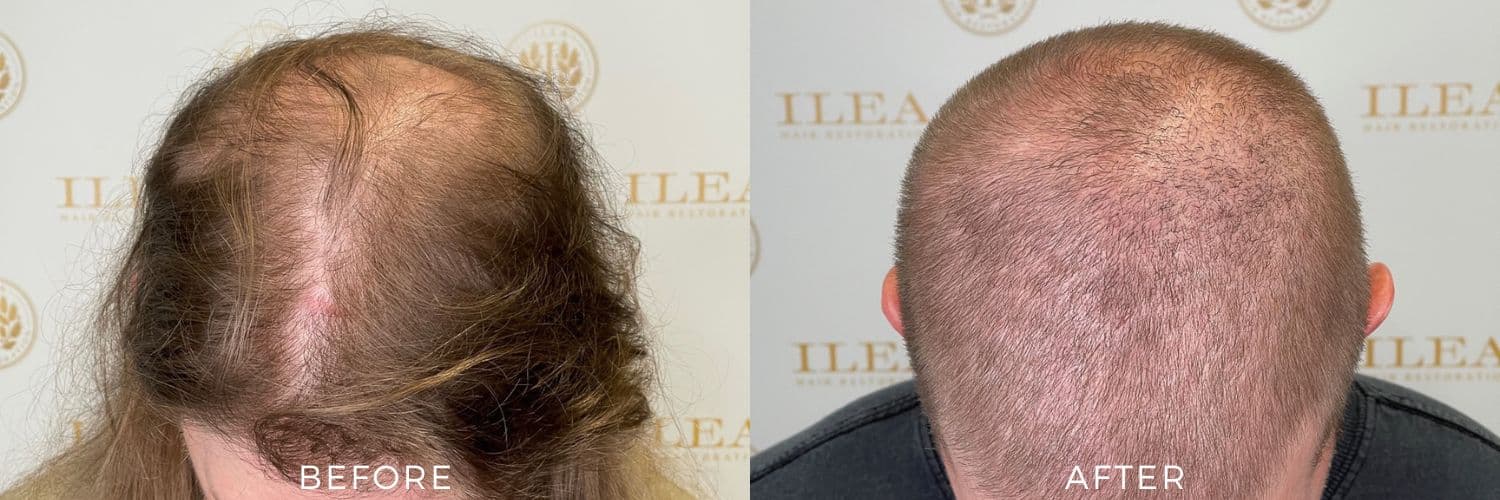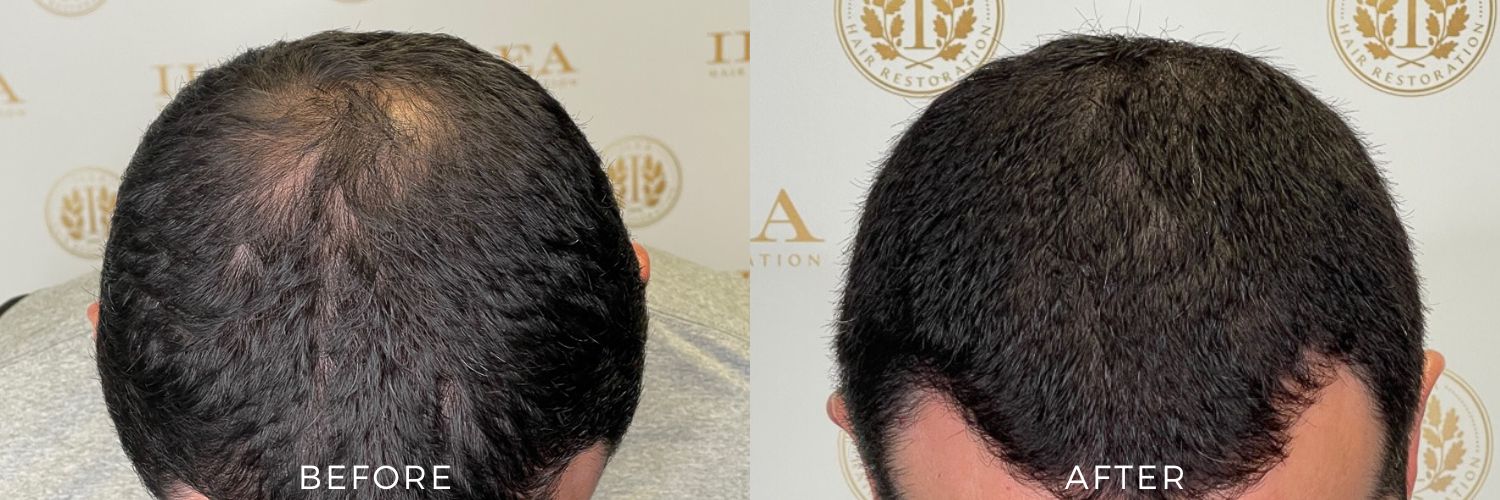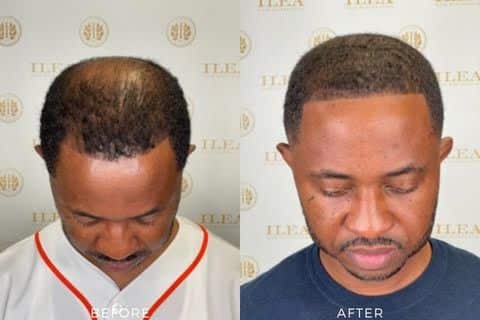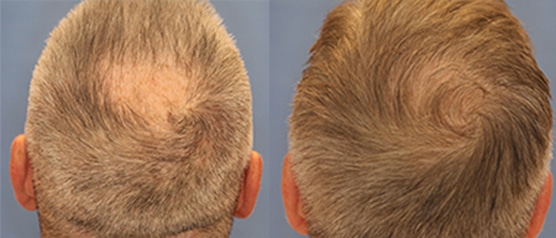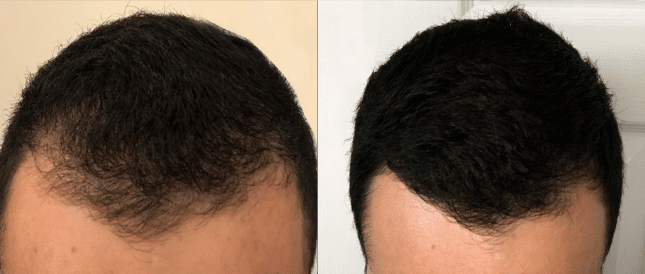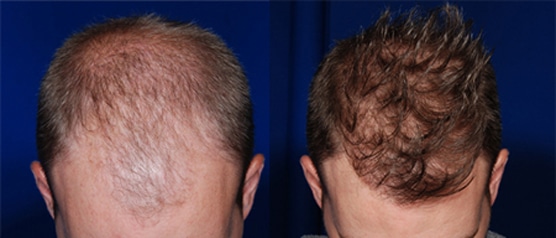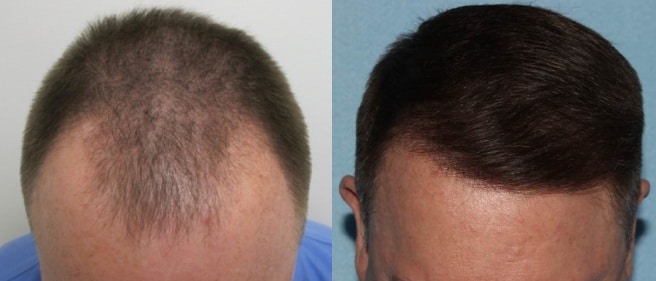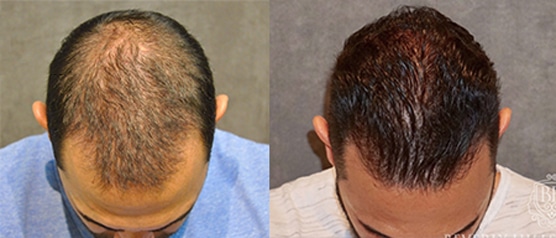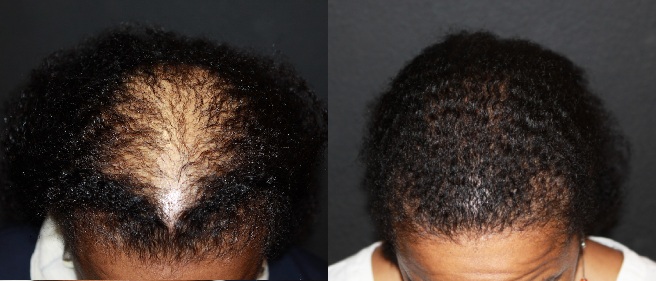With the leading hair transplant surgeon in houston











Safe FUE Hair Transplants in Houston, Texas
Learn more about what a FUE hair transplant can do for you. Contact Dr. Cesar Aristeiguieta, the leading FUE hair transplant surgeon in the Houston area. Call (832) 789-8558 today to schedule your appointment and learn more about a hair transplant.
NEW PATIENTS
GET UP TO $1000 OFF
Your Hair Transplant
By submitting this form, I consent to be contacted by Ilea Hair Restoration, PLLC via phone, text, email, or mail. Message and data rates may apply. Consent is not a condition of purchase. I acknowledge the Privacy Policy. Reply STOP to opt out.
Benefits of a FUE Hair Transplant
- Natural-looking
- No more bald spots
- The best solution to restore your hairline
- Unnoticeable, even by your family and best friends
- Enjoy a full head of hair once again!
- Improves your appearance and self-confidence
- Your new hair continues to grow for the rest of your life.
Find Out Which Hair Loss Solution Is Right For You
Hair Transplant Before and After*
Before and after images demonstrate how effectively hair transplants transform a patient’s appearance with a full head of hair. As with all cosmetic treatments, results may vary.* As with any surgical procedure, the training and experience of your surgeon is critical.
This patient is a 36-year-old male experiencing Norwood 3 hair loss. The patient had prior scalp micropigmentation to cover temporal recessions but wanted his hairline back. Dr. Cesar performed an FUE hair transplant with 2,000 grafts to the hairline, frontal forelock, and temporal recessions. Four PRFM sessions followed the FUE. Results shown are 6 months post-treatment.
This is a 40-year-old male with Norwood 4A hair loss. His hairline had become rounded, which is not a natural appearance for a male. Dr. Cesar performed an FUE hair transplant of 2,000 grafts to the hairline. The patient was also treated for dandruff with prescription-strength shampoo. Four PRFM sessions followed the FUE. Results shown are 6 months post-treatment.
This 50-year-old male patient with Norwood 6 hair loss had 2 prior FUT hair transplants at another clinic. The patient did not have enough density to cover his scalp or give him a hairline following those procedures. The patient also had an unnatural gap in his frontal hair. Our goals, in this case, were modest due to the limited supply of donor hair. Dr. Cesar performed an FUE hair transplant of 2,250 grafts to establish a hairline, fill in the gap in the frontal scalp, and add as much density to the top of the scalp as possible. The patient’s FUT scars were removed using an FUE technique, and four PRFM sessions followed the FUE. Results shown are 6 months post-treatment.
This is a 41-year-old male with Norwood 5 hair loss. We did an FUE hair transplant of 3,122 grafts focused on the hairline, temporal recessions, and top of the scalp. We also began to close his crown hair loss. He had 4 sessions of PRFM and dandruff treatment with prescription medication. These results are 6 months post-treatment.
Understanding the Hair Transplant Process
Simply put, a hair transplant takes the hair you have and transfers it to areas without hair. Hair is typically taken from the back and sides of your head. Although body hair has been used to restore scalp hair, we do not perform such transplants as the cosmetic results are not very good.
How the FUE Procedure Works
Before the procedure, you and Dr. Cesar will agree on the appearance and location of the hairline. The transplant begins with drawing the hairline. The team then proceeds to shave the donor area (back and sides of the scalp). Some patients prefer to buzz their hair with a #1 or #2 guard on the clippers. This makes the transplant easier to perform, and all the hair grows out at about the same rate.
Before starting a transplant, Dr. Cesar sterilizes the area where the hair will be removed. He also numbs the area with a local anesthetic. You will receive a sedative so you can relax and perhaps sleep during the procedure.
The majority of patients find the procedure virtually painless. The only discomfort you may feel is when the local anesthetic is being injected.
Once you are comfortable and sedated, Dr. Cesar begins the procedure. First, he takes individual follicles out of the scalp skin. As you heal, you’ll see tiny marks where each follicle was removed. Dr. Cesar only takes every 4th to 6th follicle. This leaves plenty of hair to cover where the grafts were taken. It also preserves enough hair for future transplants, if needed.
Once each hair follicle is harvested and prepared for implantation,. Dr. Cesar makes small slits in the desired recipient area of your scalp and implants hair follicles into the openings.
Dr. Cesar and his team finish the procedure by making sure there is no bleeding. They apply bandages and antibiotics to the donor area. Your head will be covered with a loose surgical cap.
Dr. Cesar will also help during your hair transplant recovery timeline, giving aftercare tips which will ensure you get optimal results.
During the transplant, you will be able to take short breaks to go to the bathroom, eat, make phone calls, or rest. You will also be able to listen to music, listen to audiobooks, or binge-watch your favorite TV show.
Why Choose Dr. Cesar
With over 23 years of medical experience, Dr. Cesar’s passion for hair restoration started in medical school and extends to his prestigious ISHRS membership. Beyond medical excellence, he offers patients his personal cell phone number for post-consultation support. Dr. Cesar’s empathy stems from his own hair loss journey since 2003. Entrust your hair restoration to Dr. Cesar, a skilled, professional, and compassionate guide.
Dr. Cesar's
Hair Restoration Journey
The Hair Restoration Journey Begins

Ready. Set. Transplant.

Scalp Preparation
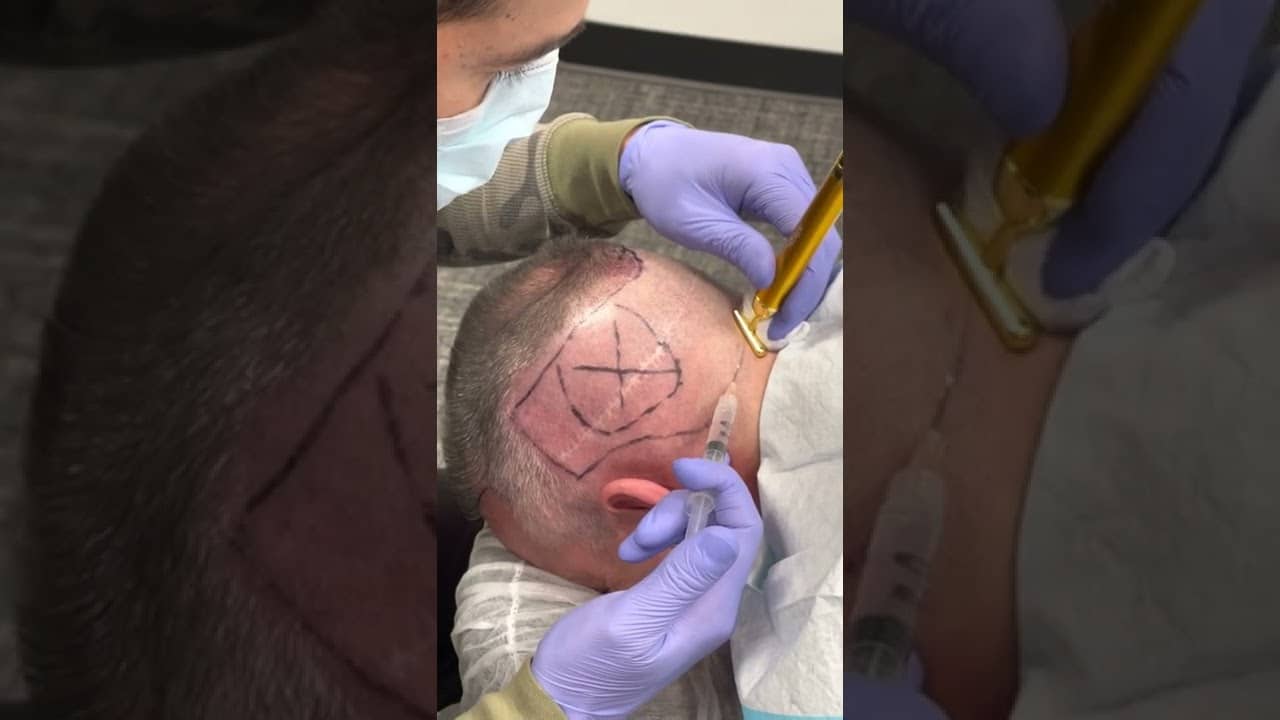
Graft Harvesting
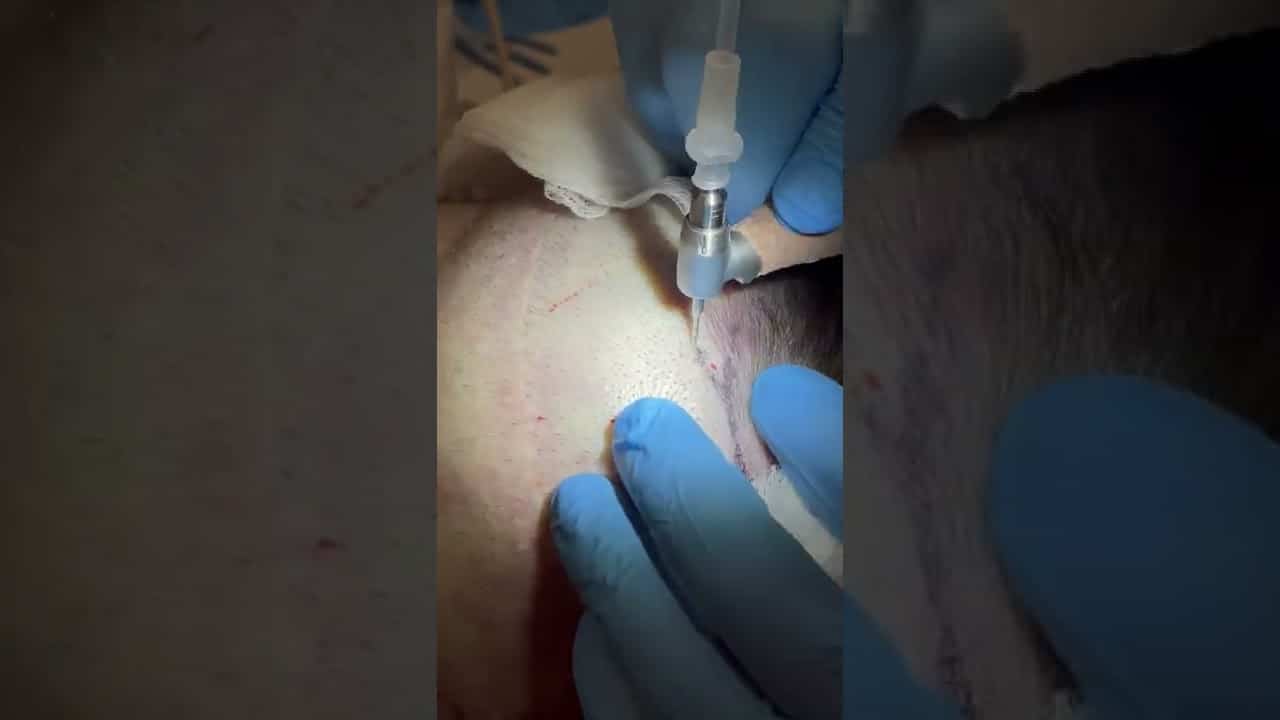
Getting Ready for Implantation
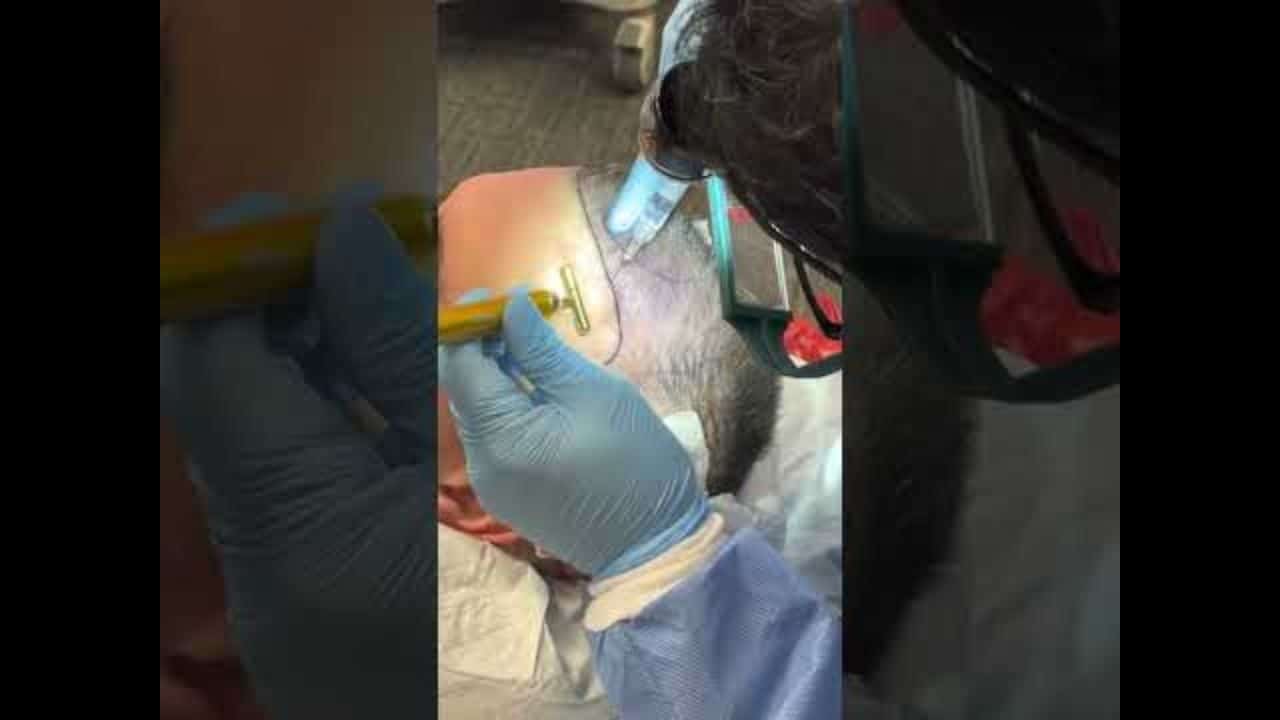
Creating Implantation Sites
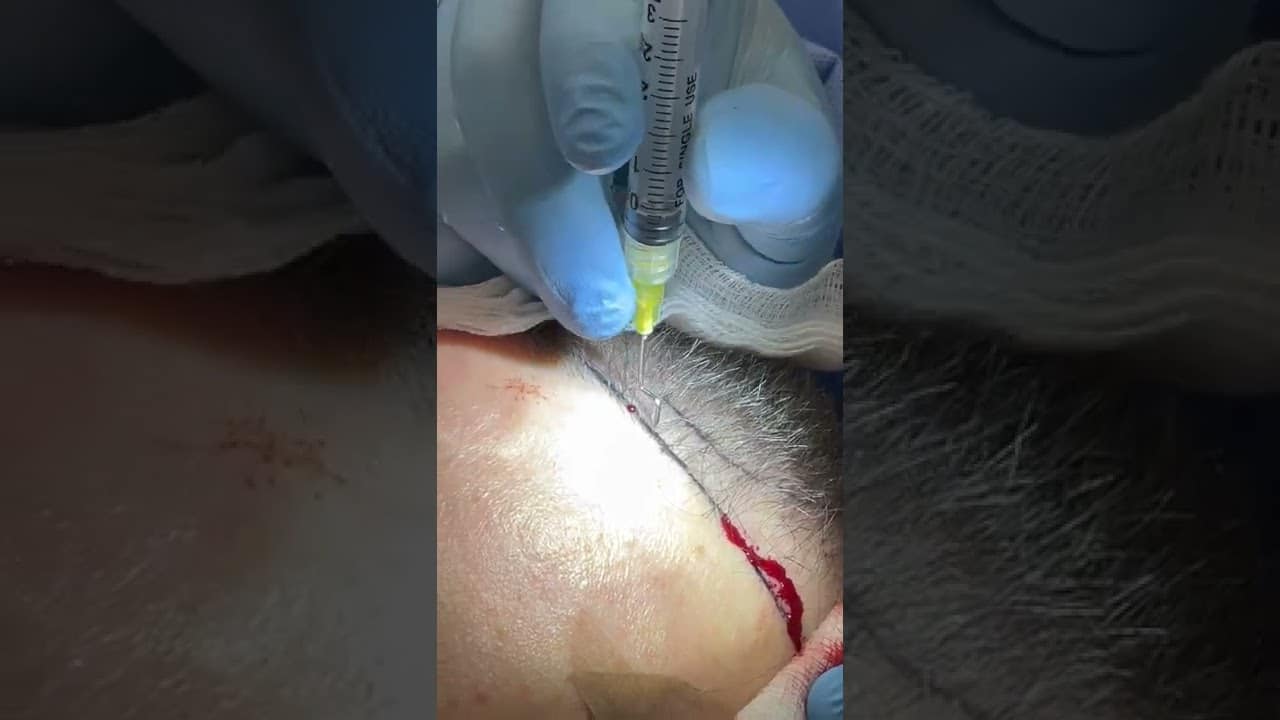
Why We Prefer the Follicular Unit Transplantation (FUE)
Although modern hair transplant methods produce outstanding cosmetic results, hair transplants are not a new treatment option. The first transplant was performed in 1939 in Japan. At the time, Japanese surgeons transplanted single hairs to achieve a good cosmetic result.
From the 1950s until the early 2000s, hair transplants involved “plugs” or large clumps of around 25 hairs. The result was a “doll hair” appearance, which was not natural and quite obvious.
Follicular unit transplantation (FUT) was developed in the 1990s to improve the cosmetic results of a hair transplant. In this procedure, a strip of scalp with hair is taken from the back of the scalp, and hair “mini-micrografts” are dissected out (units of 1 to 4 follicles). These mini-micrografts are then implanted in the desired area. The results are good but, in some cases, can still appear a bit “pluggy.” In other areas, the density of the hair may appear thin. That being said, the big problem with a FUT hair transplant is that the large scar on the back of the scalp can be unsightly.
The latest advance in hair transplants came in 2002 when surgeons refined techniques to harvest individual hair follicles. Follicular unit extraction (FUE) allows for the most natural hair restoration method. By removing individual follicles from the back and sides of the patient’s scalp and re-implanting them where needed, Dr. Cesar can create a hair transplant that looks completely natural!
Hair Transplant Recovery
The hair transplant will take several hours to complete. In part, this depends on the amount of work performed by the surgeon.
You will go home the same day of the procedure. Still, you will need a ride home, as driving is not allowed 24 hours after receiving sedative medication.
Two days after the FUE transplant surgery, Dr. Cesar will remove the bandages and inspect the area. There should be no bleeding or infection.
Some swelling is natural, and you will be prescribed steroids to keep the swelling down. Patients are given antibiotics and pain medications, in addition to steroids.
You should be able to return to work or normal activities in about 1 – 2 days.
- You will not wash your hair for four days. Only use mild shampoos for the first few weeks. No direct shower pressure to the scalp for two weeks after the transplant.
- Don’t press a brush or comb down over the new grafts for about three weeks.
- Don’t wear any hats or pullover shirts and jackets until your doctor says it’s OK.
- Don’t exercise for about a week.
- Do not sweat or expose the grafts to direct sunlight for the first month. Wear a hat if going outside.
- If you don’t care for the hair you still have, such will continue to fall out, making your hair transplant appear thinner and less dense. Consider supplementing your transplant with hair loss medication, minoxidil, a laser cap, or getting human growth factors treatments.
FUE Hair Transplant Results*
Following a hair transplant, many implanted follicles will shed the hair (the hair will fall out of the follicles). But don’t panic. A new hair will start growing and become visible again in 3 to 4 months.
The transplanted hair will continue to grow for your lifetime.
As always, individual experiences will vary.*


FUE Hair Transplant Cost in Houston
- The number of transplants needed
- Aftercare medications
- Size of the transplant procedure
How to Find the Best Hair Transplant Surgeon in Houston
Remember that not all hair restoration clinics and not all hair restoration surgeons are the same.
The price is not the only consideration. You are not buying a car or an appliance. You are making a long-term investment in your appearance and well-being. Make sure you do your homework and do not just seek out the cheapest option. Beware of discounted hair transplant providers.
Hair transplantation is a technique-sensitive procedure. This means that your results are completely dependent on the skill and expertise of the person performing the transplantation.
- Training of the transplant surgeon
- Experience of the transplant surgeon
- Will the surgeon be present and participating during the entire procedure?
- If technicians assist the surgeon, what licenses, training, and experience do they have?
- Is the surgeon board-certified by the American Board of Medical Specialties (ABMS)?
- Is the surgeon a member of the International Society of Hair Restoration Surgeons (ISHRS) or a similar organization?
- Consider looking up your surgeon’s license status on the state medical board website. You can also find the board certification status on the ABMS website.

Why Choose Dr. Cesar for an FUE Hair Transplant in Houston
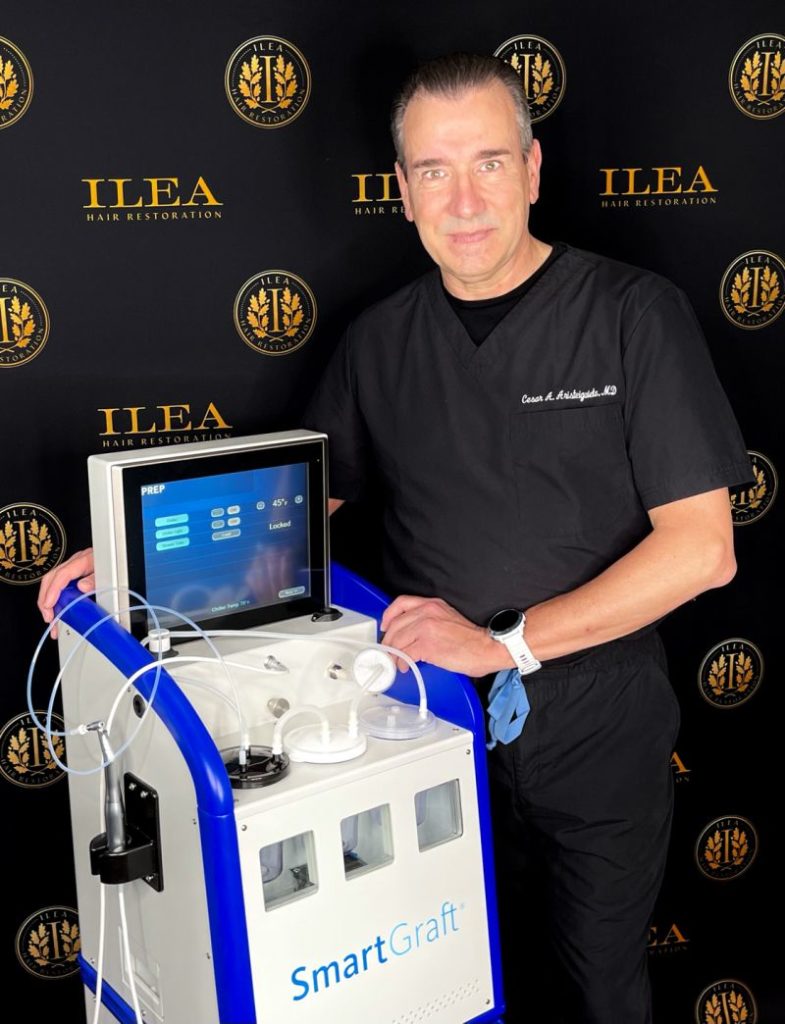
Affectionally called Dr. Cesar by his patients, Dr. Aristeiguieta is a board-certified emergency physician and founder of ILEA Hair Restoration. As a leading hair restoration surgeon in Texas, his hair transplants are sought after by the most discerning patients. He hones his expertise with extensive training in the industry’s latest technologies. ILEA Hair Restoration is recognized as a SmartGraft Center of Excellence in Hair Transplantation. Dr. Cesar is a member of the prestigious International Society for Hair Restoration Surgery (ISHRS), which focuses on promoting the highest ethical and surgical standards in the industry.
Dr. Cesar matches his expertise with a deep commitment to the safety and satisfaction of his patients. He understands how hair loss affects an individual’s well-being and confidence. Several members of his immediate family suffer from male and female-pattern hair loss. Dr. Cesar had a hair transplant himself in 2005. He continues to use various medical treatments to maintain his hair.
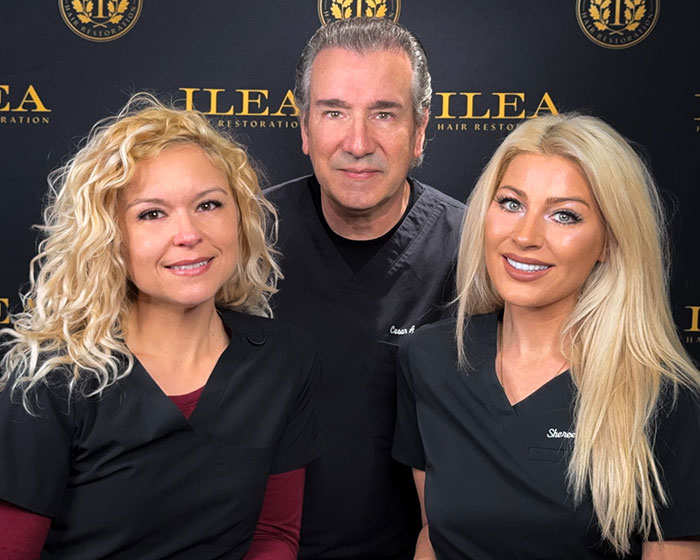
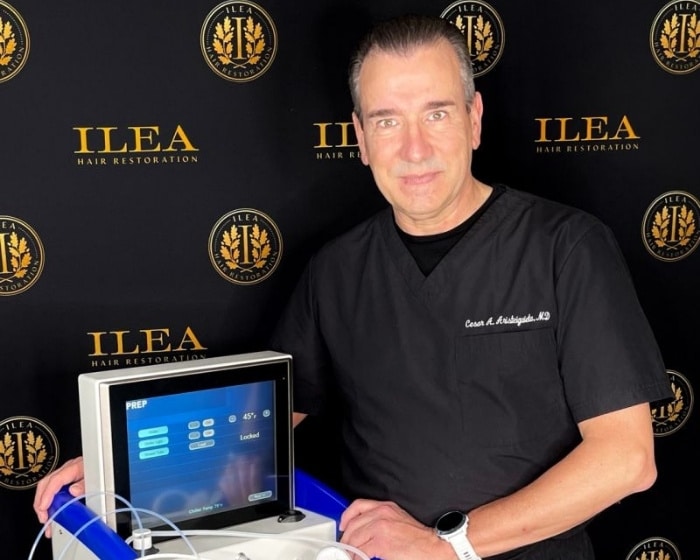
Why Choose Dr. Cesar for an FUE Hair Transplant in Houston
Affectionally called Dr. Cesar by his patients, Dr. Aristeiguieta is a board-certified emergency physician and founder of ILEA Hair Restoration. As a leading hair restoration surgeon in Texas, his hair transplants are sought after by the most discerning patients. He hones his expertise with extensive training in the industry’s latest technologies. ILEA Hair Restoration is recognized as a SmartGraft Center of Excellence in Hair Transplantation. Dr. Cesar is a member of the prestigious International Society for Hair Restoration Surgery (ISHRS), which focuses on promoting the highest ethical and surgical standards in the industry.
Dr. Cesar matches his expertise with a deep commitment to the safety and satisfaction of his patients. He understands how hair loss affects an individual’s well-being and confidence. Several members of his immediate family suffer from male and female-pattern hair loss. Dr. Cesar had a hair transplant himself in 2005. He continues to use various medical treatments to maintain his hair.
Why Choose Dr. Cesar for an FUE Hair Transplant in Houston
Affectionally called Dr. Cesar by his patients, Dr. Aristeiguieta is a board-certified emergency physician and founder of ILEA Hair Restoration. As a leading hair restoration surgeon in Texas, his hair transplants are sought after by the most discerning patients. He hones his expertise with extensive training in the industry’s latest technologies. ILEA Hair Restoration is recognized as a SmartGraft Center of Excellence in Hair Transplantation. Dr. Cesar is a member of the prestigious International Society for Hair Restoration Surgery (ISHRS), which focuses on promoting the highest ethical and surgical standards in the industry.
Dr. Cesar matches his expertise with a deep commitment to the safety and satisfaction of his patients. He understands how hair loss affects an individual’s well-being and confidence. Several members of his immediate family suffer from male and female-pattern hair loss. Dr. Cesar had a hair transplant himself in 2005. He continues to use various medical treatments to maintain his hair.
With Dr. Cesar, men and women suffering from hair loss can rest assured. Their investment is in the most capable and trustworthy hands possible.
Hair Transplantation FAQs
Worldwide, over half of men and women will experience hair loss in their lifetime. Although there are several medical treatments that slow down hair loss and, in some cases, reverse it, the most immediate and definitive hair restoration technique available is a hair transplant.
- Hair transplants use your existing hair to cover the balding areas. If you have lost too much hair, you may not be a candidate for the procedure.
- Hair transplants are intended to treat male and female-pattern baldness. There are other causes of hair loss, and a hair transplant is not intended to treat such.
- Like any surgical procedure, you need to be in good health to undergo a hair transplant. If you have chronic conditions such as diabetes, hypertension, heart disease, etc., Dr. Cesar will work with your doctor to make sure you are medically cleared before undergoing hair transplantation.
In general, people lose hair at a rate of 50 to 150 individual hairs per day. Typically, this hair loss grows back. If the hair follicle is thinned, however, regrowth does not occur. Men experience a form of gradual hair loss in their lifetime as a result of natural aging and changes in androgen (a male hormone). In addition, women also experience similar hair loss in rare cases.
There is no proof that male or female pattern baldness is related to factors like mental stress, frequent hair washes, or the type of shampoo you use. There are, however, certain medical conditions that can contribute to hair loss. When you schedule a consultation with ILEA Hair, you can speak in-depth to Dr. Cesar and his team to uncover the medical causes of your balding, hair thinning, or receding hairline.
The best hair transplantation candidate has healthy hair on the sides and back of the head. The sites are used as donor areas for the grafts. Dr. Cesar of ILEA Hair will evaluate your scalp and hair loss to determine which method of hair restoration best suits your head and aesthetic goals.
Hair transplantation surgery involves local anesthesia and sometimes intravenous sedation to ensure total patient comfort.
The time it takes to complete surgery depends on the type of hair transplant you receive. A Follicular Unit Transplant or FUT takes about 4 to 6 hours. A Follicular Unit Extraction or FUE takes almost 8 hours and can implant up to 3,500 hair grafts.
Yes, you can swim and resume all regular physical activities within five to seven days after your treatment. Your transplanted hair is permanent and may be washed, cut, and dyed as usual, just like normal hair.
The most notable side effect you may experience after your hair transplant is slight swelling. After your procedure, you are prescribed steroids to help alleviate the swelling. In some cases, you may also receive antibiotics and pain medication to manage the aftereffects fully. During your consultation with Dr. Cesar, he can explain the recovery process in greater detail to help you understand the side effects and what to expect after surgery.
The transplanted follicles shed the hair present at the time of the transplant. Next, it develops the new hairs. This takes approximately 3 to 4 months to grow. The new group of permanent hairs in the transplanted grafts will be fully formed within 6 to 8 months.
Hair follicles from the back portion of the scalp that are transplanted to the top of the scalp are permanent. They are not sensitive to the effects of DHT. Therefore, transplanted hair follicles continue to grow for your entire lifetime post-transplant.
Testimonials

“I had the pleasure of seeing Dr. Cesar for the restoration of my hair. I was impressed with his attention to details and honesty. I am currently a satisfied patient and highly recommend Dr. Cesar.”
“As a woman in her 30s, losing my hair has been a difficult experience. Dr. Cesar has kindly and diligently guided me through understanding the causes behind my hair loss and given me all the tools I need to preserve and regrow my hair. After 2 PRFM treatments and 6 months of using minoxidil/finasteride, I have seen significant improvements! I look and feel better and more confident every day. I highly recommend Ilea and Dr. Cesar!”
NEW PATIENTS
GET UP TO $1000 OFF
Your Hair Transplant
By submitting this form, I consent to be contacted by Ilea Hair Restoration, PLLC via phone, text, email, or mail. Message and data rates may apply. Consent is not a condition of purchase. I acknowledge the Privacy Policy. Reply STOP to opt out.
DISCLAIMERS:
Restrictions apply. Based on available surgical dates. May not be combined with any financing offers. Limit 1 per patient. No cash value. Must be a candidate for hair restoration surgery as determined by Dr. Cesar Aristeiguieta, MD. Not all patients will qualify.
*Get up to $1000 off select FUE hair transplants as a new client. Terms and conditions apply. Patients should book a consult for full offer details.
*Results may vary. We are reputable for complete customer satisfaction for completed treatments. Before and after images reflect real results from real patients, although individual results may vary. No treatment is promised to provide permanent results. A guarantee is neither provided nor implied. Statements estimating treatment duration and the number of treatments required are based on the typical experience of our patients, however, individual experiences may vary.
*You agree to be contacted by Ilea Hair Restoration regarding marketing messages by text, phone, or email, by submitting this form. We respect your private information and commit to protecting it. At any time you are able to unsubscribe from these messages. For more information regarding our Privacy Policy, please review here.



